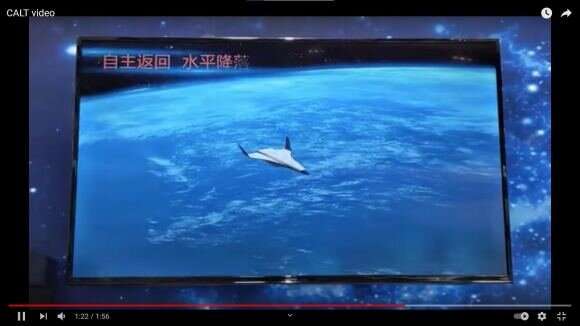Similar to what Musk and SpaceX have proposed for the Starship, the video explores the potential for rocket systems that could deliver suborbital point-to-point transportation services.
The animation was recorded and uploaded to the Chinese social network Weibo, which was accompanied by the following description (translated directly from Mandarin).
"The promotional animation of 'One-Hour Global Arrival in Space Transportation System' of the First Academy of Aerospace Engineering, compare? This afternoon was recorded from [2021 Chinese Astronomy Day] Booth of China Academy of Launch Vehicle Technology at the Aerospace Industry Achievement Exhibition. If you want to make an appointment to visit Lunar Land, please go to the bottom of this blog."
In the video, we can see two different concepts for achieving suborbital passenger flights that could be operational by the 2040s. The video came to the attention of Eric Berger at Ars Technica, which mirrored it on Youtube so that it could reach a wider audience. The animation begins by showing a spaceport with several launch pads nearby. On each, we see two-stage vertical takeoff and landing (VTOL) rockets that look strikingly similar to the Starship and Super Heavy.
Also similar to the Starship is the way the first stage booster returns to Earth after separation, indicating that it is a totally reusable system. We then see passengers scening views of Earth and experiencing temporary weightlessness before the spacecraft begins making a powered descent. The flight ends with the spacecraft landing in a major city clearly several time zones away (since it's nighttime where they land).
In addition to its appearance and configuration, the animation is also similar to the "Earth to Earth" concept video released by SpaceX in September of 2017 (shown below). In that animation, a Starship ferries passengers from a platform at sea off the coast of New York and land on a similar platform off the coast of Shanghai in just 34 minutes.
The second point-to-point concept in the Chinese animation shows a horizontal takeoff and landing (HTOL) vehicle being launched via an electromagnetic rail. Once this "spaceplane" is catapulted into the air, it engages what appears to be a hybrid-propellant rocket engine to accelerate from Mach 2 to Mach 15 (supersonic to hypersonic) and achieve suborbital flight.
Both of these concepts incorporate technology and ideas that are widely popular right now with both space agencies and commercial space. Between NASA, the ESA, SpaceX, Blue Origin, Sierra Nevada, Reaction Engines, and other federal and private programs, multiple reusable rocket and spaceplane concepts are currently under development.
What's more, both are consistent with China's long-term aim to become the world's leading space power by 2045. According to the roadmap released by the China Aerospace Science and Technology Corporation in 2017, China hopes to develop a "suborbital carrier vehicle" by 2025 that will eventually grow into a fleet, one which is capable of delivering cargo anywhere in the world by 2035 and passengers by 2045.
However, the clear resemblance between CALT's rocket concept and the Starship is also in keeping with the way China has monitored SpaceX's progress practically from inception. As Eric Berger noted in his recently-published book Liftoff—which recounts the early struggles of SpaceX—a Chinese spy boat was stationed off the coast of Omelek Island (part of the Marshall Islands, South Pacific) in 2006 to watch the inaugural flight of the Falcon 1.
More recent examples include the incorporation of "grid fins" to the Long March 2C rocket (similar to the Falcon 9) for the sake of future reusability, as well as developing the Long March 8 to land on sea platforms. China's long-term plan for the Long March 9—which will be the country's most powerful heavy-lift system once it is in service (slated for the 2030s) – includes making it partly reusable.
In the meantime, it is not clear if China plans to develop a Starship-like rocket would include equipping it for missions to the moon and Mars (in addition to point-to-point suborbital flights). But since regular missions to the moon and Mars were also part of the roadmap, it's entirely possible China intends to adopt the Starship design and mission profile in its entirety.
One thing is for certain: China intends to be the superpower in space by the mid-21st century, and not merely one of several. While they have some catch-up to do before that can happen, their rate of growth is unparalleled.
Explore further



